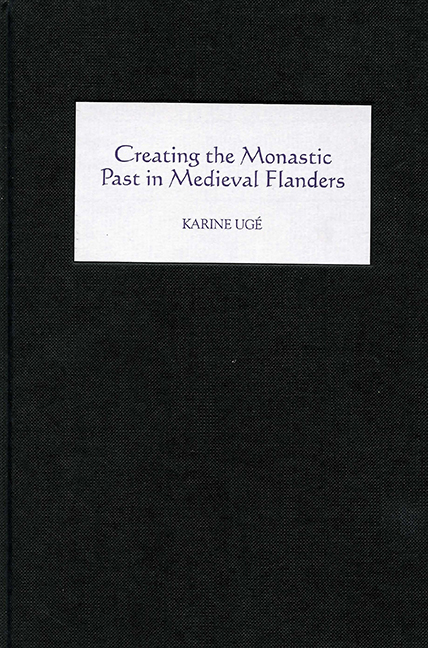Book contents
- Frontmatter
- Contents
- Acknowledgements
- Abbreviations
- Maps
- Genealogies
- Introduction
- Part I Saint-Bertin
- 1 Saint-Bertin from the Foundation to the Eleventh Century
- 2 Cultural Life at Saint-Bertin
- 3 Narrative Production at Saint-Bertin
- Part II The Hagiographic Cycle of St Rictrude
- Conclusion
- Bibliography
- Index
- Miscellaneous Endmatter
2 - Cultural Life at Saint-Bertin
from Part I - Saint-Bertin
Published online by Cambridge University Press: 12 September 2017
- Frontmatter
- Contents
- Acknowledgements
- Abbreviations
- Maps
- Genealogies
- Introduction
- Part I Saint-Bertin
- 1 Saint-Bertin from the Foundation to the Eleventh Century
- 2 Cultural Life at Saint-Bertin
- 3 Narrative Production at Saint-Bertin
- Part II The Hagiographic Cycle of St Rictrude
- Conclusion
- Bibliography
- Index
- Miscellaneous Endmatter
Summary
Introduction
Saint-Bertin was an extremely wealthy and prestigious monastery which had attracted the attention of successive Carolingian and Flemish rulers. There is no doubt that Carolingian and, to some extent, Flemish patronage, allowed Saint-Bertin to become a cultural center which stood in an honored position among the other Frankish monasteries. Saint-Bertin possessed a wellendowed library and, at different periods of its history, produced its own manuscripts, some of them aesthetically remarkable. The quality of its library and scriptorium offered Saint-Bertin the intellectual tools necessary for the development of a distinguished monastic school. The oblates educated at the school had good literary abilities, as exemplified by the monk and scholar Grimbald, who was called to the court of King Alfred (c. 886–887); Folcuin, who wrote history and hagiography, and in the eleventh century Folcard and Goscelin, who pursued their careers as writers in England. Saint-Bertin's relationship with England was indeed continuous during the period; these contacts were not only documented in the written sources from Saint-Bertin, but they are also very visible in the surviving manuscripts from the community's library and by its artistic production. Most of the oldest manuscripts (before 800) which have survived were written or annotated by insular hands. In the second half of the ninth century, the scriptorium produced a series of manuscripts in the Franco-Saxon style, a Continental style that originated in Flanders (at Saint-Amand and Saint-Vaast) and was characterized by its strong insular overtones. Finally, during Odbert's abbacy, the Anglo- Saxon artists who visited Saint-Bertin and painted some of Odbert's manuscripts were extremely influential on Odbert himself and on later artistic production at Saint-Bertin.
The library
The study of book production and ownership at Saint-Bertin is an immense task that deserves a comprehensive study of its own. The task of the student of Saint-Bertin's library is facilitated by the fact that, in the aftermath of the French Revolution, most of the manuscripts which survived destruction and dissemination were gathered in the municipal libraries of Saint-Omer and Boulogne-sur-Mer. About sixty manuscripts and fragments of manuscripts, which date from the sixth century to the period of Abbot Odbert, can be attributed to the medieval library of Saint-Bertin, thanks to anathemas and identification marks which were inscribed on the front pages from the ninth century to the fifteenth.
- Type
- Chapter
- Information
- Creating the Monastic Past in Medieval Flanders , pp. 37 - 49Publisher: Boydell & BrewerPrint publication year: 2005

